Junbiao Pang
Few Shot Semi-Supervised Learning for Abnormal Stop Detection from Sparse GPS Trajectories
Oct 14, 2025Abstract:Abnormal stop detection (ASD) in intercity coach transportation is critical for ensuring passenger safety, operational reliability, and regulatory compliance. However, two key challenges hinder ASD effectiveness: sparse GPS trajectories, which obscure short or unauthorized stops, and limited labeled data, which restricts supervised learning. Existing methods often assume dense sampling or regular movement patterns, limiting their applicability. To address data sparsity, we propose a Sparsity-Aware Segmentation (SAS) method that adaptively defines segment boundaries based on local spatial-temporal density. Building upon these segments, we introduce three domain-specific indicators to capture abnormal stop behaviors. To further mitigate the impact of sparsity, we develop Locally Temporal-Indicator Guided Adjustment (LTIGA), which smooths these indicators via local similarity graphs. To overcome label scarcity, we construct a spatial-temporal graph where each segment is a node with LTIGA-refined features. We apply label propagation to expand weak supervision across the graph, followed by a GCN to learn relational patterns. A final self-training module incorporates high-confidence pseudo-labels to iteratively improve predictions. Experiments on real-world coach data show an AUC of 0.854 and AP of 0.866 using only 10 labeled instances, outperforming prior methods. The code and dataset are publicly available at \href{https://github.com/pangjunbiao/Abnormal-Stop-Detection-SSL.git}
MEC-Quant: Maximum Entropy Coding for Extremely Low Bit Quantization-Aware Training
Sep 19, 2025Abstract:Quantization-Aware Training (QAT) has driven much attention to produce efficient neural networks. Current QAT still obtains inferior performances compared with the Full Precision (FP) counterpart. In this work, we argue that quantization inevitably introduce biases into the learned representation, especially under the extremely low-bit setting. To cope with this issue, we propose Maximum Entropy Coding Quantization (MEC-Quant), a more principled objective that explicitly optimizes on the structure of the representation, so that the learned representation is less biased and thus generalizes better to unseen in-distribution samples. To make the objective end-to-end trainable, we propose to leverage the minimal coding length in lossy data coding as a computationally tractable surrogate for the entropy, and further derive a scalable reformulation of the objective based on Mixture Of Experts (MOE) that not only allows fast computation but also handles the long-tailed distribution for weights or activation values. Extensive experiments on various tasks on computer vision tasks prove its superiority. With MEC-Qaunt, the limit of QAT is pushed to the x-bit activation for the first time and the accuracy of MEC-Quant is comparable to or even surpass the FP counterpart. Without bells and whistles, MEC-Qaunt establishes a new state of the art for QAT.
Stabilizing Quantization-Aware Training by Implicit-Regularization on Hessian Matrix
Mar 14, 2025Abstract:Quantization-Aware Training (QAT) is one of the prevailing neural network compression solutions. However, its stability has been challenged for yielding deteriorating performances as the quantization error is inevitable. We find that the sharp landscape of loss, which leads to a dramatic performance drop, is an essential factor that causes instability. Theoretically, we have discovered that the perturbations in the feature would bring a flat local minima. However, simply adding perturbations into either weight or feature empirically deteriorates the performance of the Full Precision (FP) model. In this paper, we propose Feature-Perturbed Quantization (FPQ) to stochastically perturb the feature and employ the feature distillation method to the quantized model. Our method generalizes well to different network architectures and various QAT methods. Furthermore, we mathematically show that FPQ implicitly regularizes the Hessian norm, which calibrates the smoothness of a loss landscape. Extensive experiments demonstrate that our approach significantly outperforms the current State-Of-The-Art (SOTA) QAT methods and even the FP counterparts.
Uncertainty-aware Long-tailed Weights Model the Utility of Pseudo-labels for Semi-supervised Learning
Mar 13, 2025Abstract:Current Semi-supervised Learning (SSL) adopts the pseudo-labeling strategy and further filters pseudo-labels based on confidence thresholds. However, this mechanism has notable drawbacks: 1) setting the reasonable threshold is an open problem which significantly influences the selection of the high-quality pseudo-labels; and 2) deep models often exhibit the over-confidence phenomenon which makes the confidence value an unreliable indicator for assessing the quality of pseudo-labels due to the scarcity of labeled data. In this paper, we propose an Uncertainty-aware Ensemble Structure (UES) to assess the utility of pseudo-labels for unlabeled samples. We further model the utility of pseudo-labels as long-tailed weights to avoid the open problem of setting the threshold. Concretely, the advantage of the long-tailed weights ensures that even unreliable pseudo-labels still contribute to enhancing the model's robustness. Besides, UES is lightweight and architecture-agnostic, easily extending to various computer vision tasks, including classification and regression. Experimental results demonstrate that combining the proposed method with DualPose leads to a 3.47% improvement in Percentage of Correct Keypoints (PCK) on the Sniffing dataset with 100 data points (30 labeled), a 7.29\% improvement in PCK on the FLIC dataset with 100 data points (50 labeled), and a 3.91% improvement in PCK on the LSP dataset with 200 data points (100 labeled). Furthermore, when combined with FixMatch, the proposed method achieves a 0.2% accuracy improvement on the CIFAR-10 dataset with 40 labeled data points and a 0.26% accuracy improvement on the CIFAR-100 dataset with 400 labeled data points.
Unsupervised Abnormal Stop Detection for Long Distance Coaches with Low-Frequency GPS
Nov 07, 2024Abstract:In our urban life, long distance coaches supply a convenient yet economic approach to the transportation of the public. One notable problem is to discover the abnormal stop of the coaches due to the important reason, i.e., illegal pick up on the way which possibly endangers the safety of passengers. It has become a pressing issue to detect the coach abnormal stop with low-quality GPS. In this paper, we propose an unsupervised method that helps transportation managers to efficiently discover the Abnormal Stop Detection (ASD) for long distance coaches. Concretely, our method converts the ASD problem into an unsupervised clustering framework in which both the normal stop and the abnormal one are decomposed. Firstly, we propose a stop duration model for the low frequency GPS based on the assumption that a coach changes speed approximately in a linear approach. Secondly, we strip the abnormal stops from the normal stop points by the low rank assumption. The proposed method is conceptually simple yet efficient, by leveraging low rank assumption to handle normal stop points, our approach enables domain experts to discover the ASD for coaches, from a case study motivated by traffic managers. Datset and code are publicly available at: https://github.com/pangjunbiao/IPPs.
Decorrelating Structure via Adapters Makes Ensemble Learning Practical for Semi-supervised Learning
Aug 08, 2024



Abstract:In computer vision, traditional ensemble learning methods exhibit either a low training efficiency or the limited performance to enhance the reliability of deep neural networks. In this paper, we propose a lightweight, loss-function-free, and architecture-agnostic ensemble learning by the Decorrelating Structure via Adapters (DSA) for various visual tasks. Concretely, the proposed DSA leverages the structure-diverse adapters to decorrelate multiple prediction heads without any tailed regularization or loss. This allows DSA to be easily extensible to architecture-agnostic networks for a range of computer vision tasks. Importantly, the theoretically analysis shows that the proposed DSA has a lower bias and variance than that of the single head based method (which is adopted by most of the state of art approaches). Consequently, the DSA makes deep networks reliable and robust for the various real-world challenges, \textit{e.g.}, data corruption, and label noises. Extensive experiments combining the proposed method with FreeMatch achieved the accuracy improvements of 5.35% on CIFAR-10 dataset with 40 labeled data and 0.71% on CIFAR-100 dataset with 400 labeled data. Besides, combining the proposed method with DualPose achieved the improvements in the Percentage of Correct Keypoints (PCK) by 2.08% on the Sniffing dataset with 100 data (30 labeled data), 5.2% on the FLIC dataset with 100 data (including 50 labeled data), and 2.35% on the LSP dataset with 200 data (100 labeled data).
Asymptotic Unbiased Sample Sampling to Speed Up Sharpness-Aware Minimization
Jun 12, 2024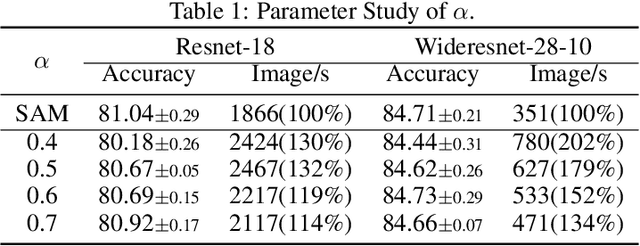
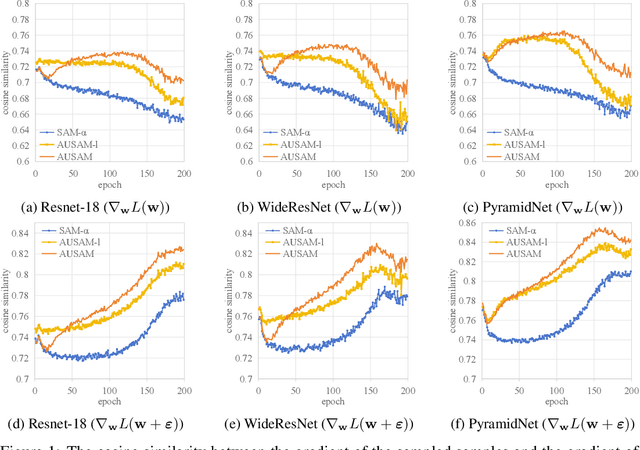
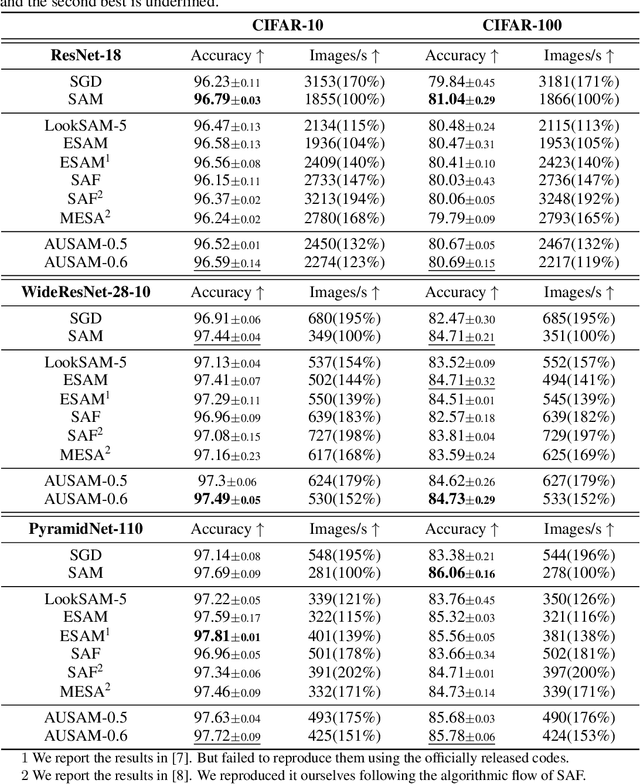

Abstract:Sharpness-Aware Minimization (SAM) has emerged as a promising approach for effectively reducing the generalization error. However, SAM incurs twice the computational cost compared to base optimizer (e.g., SGD). We propose Asymptotic Unbiased Sampling with respect to iterations to accelerate SAM (AUSAM), which maintains the model's generalization capacity while significantly enhancing computational efficiency. Concretely, we probabilistically sample a subset of data points beneficial for SAM optimization based on a theoretically guaranteed criterion, i.e., the Gradient Norm of each Sample (GNS). We further approximate the GNS by the difference in loss values before and after perturbation in SAM. As a plug-and-play, architecture-agnostic method, our approach consistently accelerates SAM across a range of tasks and networks, i.e., classification, human pose estimation and network quantization. On CIFAR10/100 and Tiny-ImageNet, AUSAM achieves results comparable to SAM while providing a speedup of over 70%. Compared to recent dynamic data pruning methods, AUSAM is better suited for SAM and excels in maintaining performance. Additionally, AUSAM accelerates optimization in human pose estimation and model quantization without sacrificing performance, demonstrating its broad practicality.
Modeling Multi-Granularity Context Information Flow for Pavement Crack Detection
Apr 19, 2024



Abstract:Crack detection has become an indispensable, interesting yet challenging task in the computer vision community. Specially, pavement cracks have a highly complex spatial structure, a low contrasting background and a weak spatial continuity, posing a significant challenge to an effective crack detection method. In this paper, we address these problems from a view that utilizes contexts of the cracks and propose an end-to-end deep learning method to model the context information flow. To precisely localize crack from an image, it is critical to effectively extract and aggregate multi-granularity context, including the fine-grained local context around the cracks (in spatial-level) and the coarse-grained semantics (in segment-level). Concretely, in Convolutional Neural Network (CNN), low-level features extracted by the shallow layers represent the local information, while the deep layers extract the semantic features. Additionally, a second main insight in this work is that the semantic context should be an guidance to local context feature. By the above insights, the proposed method we first apply the dilated convolution as the backbone feature extractor to model local context, then we build a context guidance module to leverage semantic context to guide local feature extraction at multiple stages. To handle label alignment between stages, we apply the Multiple Instance Learning (MIL) strategy to align the high-level feature to the low-level ones in the stage-wise context flow. In addition, compared with these public crack datasets, to our best knowledge, we release the largest, most complex and most challenging Bitumen Pavement Crack (BPC) dataset. The experimental results on the three crack datasets demonstrate that the proposed method performs well and outperforms the current state-of-the-art methods.
Pixel-Wise Symbol Spotting via Progressive Points Location for Parsing CAD Images
Apr 17, 2024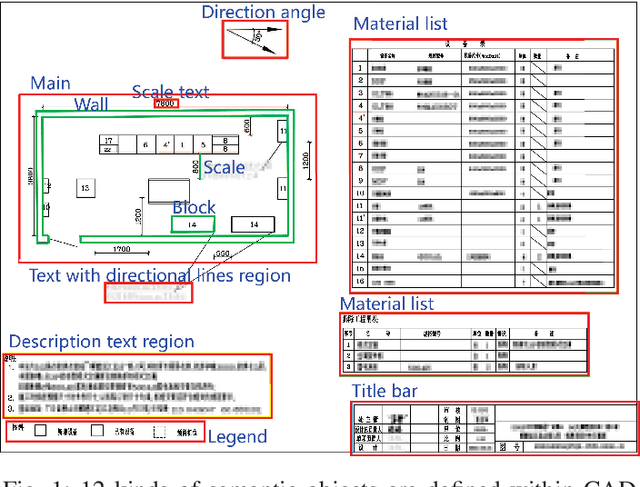
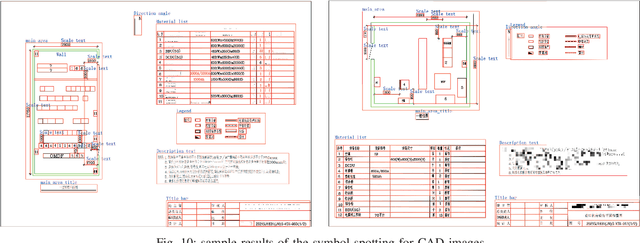
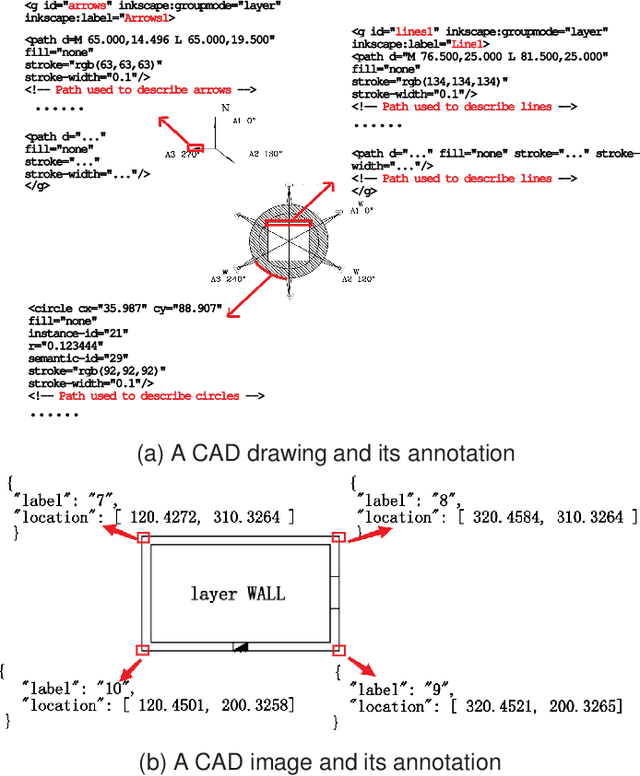
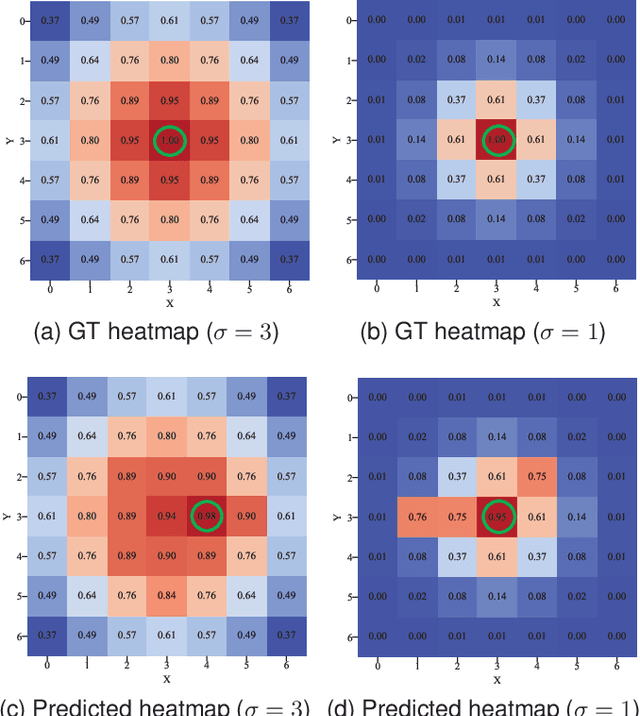
Abstract:Parsing Computer-Aided Design (CAD) drawings is a fundamental step for CAD revision, semantic-based management, and the generation of 3D prototypes in both the architecture and engineering industries. Labeling symbols from a CAD drawing is a challenging yet notorious task from a practical point of view. In this work, we propose to label and spot symbols from CAD images that are converted from CAD drawings. The advantage of spotting symbols from CAD images lies in the low requirement of labelers and the low-cost annotation. However, pixel-wise spotting symbols from CAD images is challenging work. We propose a pixel-wise point location via Progressive Gaussian Kernels (PGK) to balance between training efficiency and location accuracy. Besides, we introduce a local offset to the heatmap-based point location method. Based on the keypoints detection, we propose a symbol grouping method to redraw the rectangle symbols in CAD images. We have released a dataset containing CAD images of equipment rooms from telecommunication industrial CAD drawings. Extensive experiments on this real-world dataset show that the proposed method has good generalization ability.
A Channel-ensemble Approach: Unbiased and Low-variance Pseudo-labels is Critical for Semi-supervised Classification
Mar 27, 2024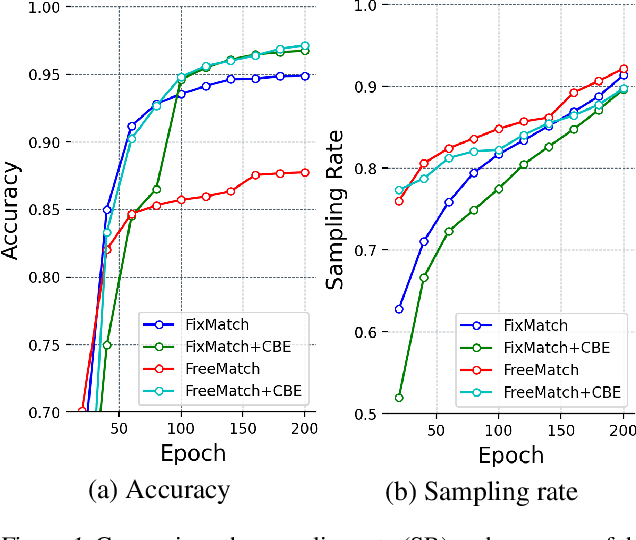

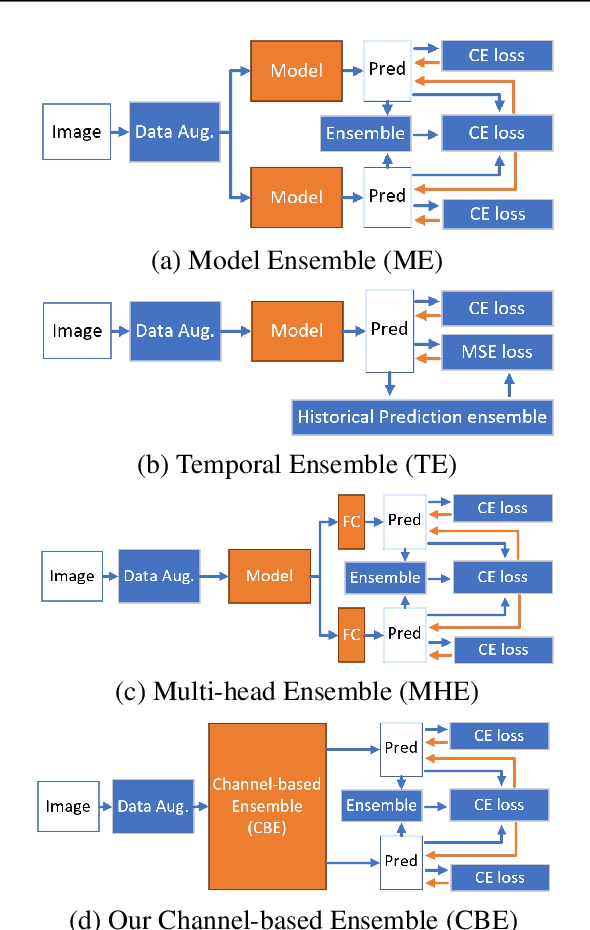
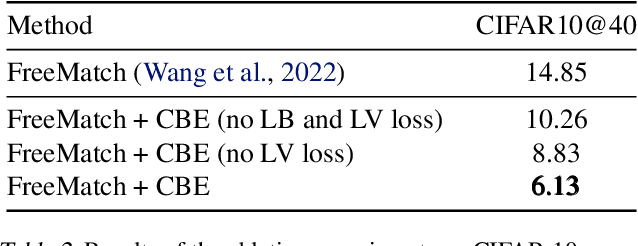
Abstract:Semi-supervised learning (SSL) is a practical challenge in computer vision. Pseudo-label (PL) methods, e.g., FixMatch and FreeMatch, obtain the State Of The Art (SOTA) performances in SSL. These approaches employ a threshold-to-pseudo-label (T2L) process to generate PLs by truncating the confidence scores of unlabeled data predicted by the self-training method. However, self-trained models typically yield biased and high-variance predictions, especially in the scenarios when a little labeled data are supplied. To address this issue, we propose a lightweight channel-based ensemble method to effectively consolidate multiple inferior PLs into the theoretically guaranteed unbiased and low-variance one. Importantly, our approach can be readily extended to any SSL framework, such as FixMatch or FreeMatch. Experimental results demonstrate that our method significantly outperforms state-of-the-art techniques on CIFAR10/100 in terms of effectiveness and efficiency.
 Add to Chrome
Add to Chrome Add to Firefox
Add to Firefox Add to Edge
Add to Edge